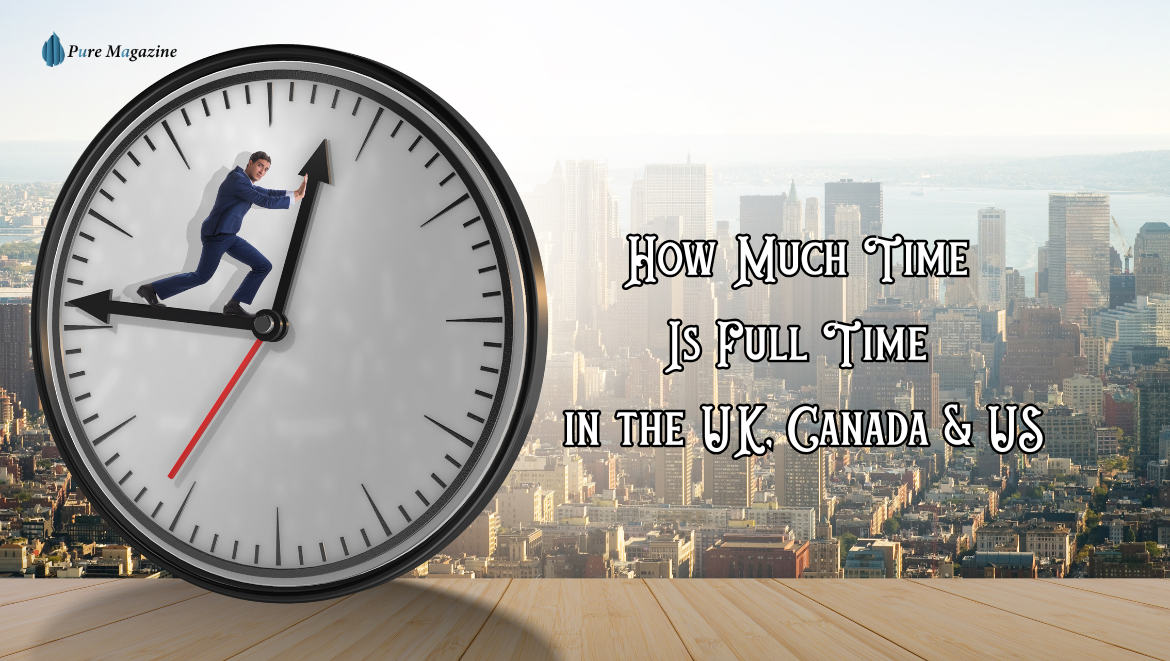Ask ten people what “full-time” means and you’ll probably get ten different answers. Some swear it’s 40 hours. Others will tell you 37.5. A few might say 30 counts too.
So, who’s right? Well… kind of all of them. It really depends on where you live and who you work for. Let’s break it down country by country, because the rules (and expectations) aren’t the same everywhere.
The “Classic” Full-Time Idea
Back in the day, everyone thought full-time = 40 hours a week. Five days, eight hours each. Boom, done.
But now? Not so clear-cut. These days:
- A lot of jobs count 35–40 hours as full-time.
- Some employers go as low as 30 hours if benefits are included.
- Honestly, it’s less about the exact number and more about whether your employer gives you the perks (health insurance, vacation, retirement, etc.).
So yeah, you could work 35 hours and still be treated as “full time.”
UK: How They See It
The UK doesn’t give a neat answer either. No law says, “This is full-time.” What they do have is a cap.
- By law, you can’t be forced to work more than 48 hours a week on average.
- Most jobs call for 35–40 hours full-time.
-
Common setups:
- NHS → 37.5 hours.
- Retail → often 30–40.
- Office jobs → usually 37–40.
30 hours in the UK? Usually, that’s part-time, unless your contract says otherwise.
Can you work over 48? Yep—if you sign an opt-out form, which a lot of people actually do.
Canada: Pretty Similar, But With Provinces
Canada’s pretty straightforward, but each province tweaks things.
- 37.5–40 hours a week is the normal “full-time” range.
- Over time depends on where you are:
- Ontario/Alberta → after 44 hours.
- BC → over 8 hours/day or 40/week.
What really matters? Whether you get benefits. Some employers will say 30+ hours makes you full-time for that. Others stick to 37.5.
Is 32 hours full-time? Sometimes, yeah—it depends on your company.
US: The Messiest of All
In the US, it’s a mix of laws and employer rules.
- FLSA: Doesn’t define full-time, just says overtime kicks in after 40 hours.
- Affordable Care Act: For health insurance, 30+ hours/week or 130/month is “full time.”
- Employers: Most still treat 35–40 as the cutoff.
If you’re salaried, you might work 40+ and never see overtime.
If you’re hourly, 40 is usually the magic number for extra pay.
Quick Snapshot
| Country | “Full Time” Range | Overtime/Cap | Notes |
|---|---|---|---|
| UK | 35–40 hrs | 48 hr average (unless opt out) | 37.5 hrs common |
| Canada | 37.5–40 hrs | 40–44 hrs depending on province | Sometimes 30 hrs counts |
| US | 35–40 hrs (ACA says 30+) | Overtime after 40 hrs | ACA: 30 hrs = benefits |
Why Does It Matter Anyway?
Being “full-time” usually unlocks the good stuff:
- Paid vacation and sick leave.
- Health insurance (super important in the US).
- Retirement plans.
- More job stability.
Part-time folks often don’t get the same deal, though sometimes big companies still offer partial benefits.
Common Myths
- “It’s always 40 hours.” → Nope, 35–37.5 is just as common.
- “Part-timers never get benefits.” → Some do! Depends on the company.
- “You can be forced to work unlimited hours.” → Not legally (though some industries push it).
Final Take
So, how many hours is full-time? Honestly:
- UK → 35–40 hrs (max 48 unless you opt out).
- Canada → 37.5–40 hrs, but sometimes 30 counts.
- US → 35–40 hrs, but the ACA says 30+.
At the end of the day, the exact number matters less than what comes with it—benefits, pay, and how much free time you’ve got left for yourself.
Because let’s be real: whether you’re doing 35 or 40 hours is still a big chunk of your week.
Visit: Pure Magazine

